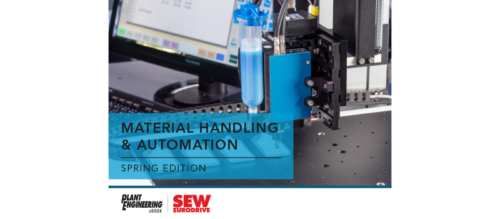RCFA + RCM = formula for successful maintenance
Over the past few years, I have heard many people say they were interested in performing reliability centered maintenance (RCM) or root cause failure analysis (RCFA) on a piece of equipment or a system.
Over the past few years, I have heard many people say they were interested in performing reliability centered maintenance (RCM) or root cause failure analysis (RCFA) on a piece of equipment or a system. They speak of these two efforts as if they accomplished the same task. This situation is a common misunderstanding. They are not the same. However, when the two approaches are properly combined, they materially enhance operating performance.
The goals of most field managers are short term, typically 2 yr at most. This time frame occurs because personal performance is usually reviewed annually and the reviews focus on current activities. Long-term goals are written by executive management. For example, management might propose a goal to install a fully functioning CMMS within the next 3-4 yr. If this long-range goal is not broken down into sets of readily identifiable tasks to be accomplished each year, the field manager may apply himself to his own short-term goals. Managers know they must make certain things happen each year to ensure good performance reviews and higher salaries.
RCM initiatives involve a tremendous amount of resources, time, and energy. It is usually a long-term goal with a short-term expectation. Good RCM produces a solid maintenance program that includes breakdown maintenance, preventive maintenance, predictive maintenance (nondestructive equipment monitoring techniques), inventory control, and planning and scheduling. And although these activities make up an important piece of the maintenance strategy, they are not the whole strategy.
When RCM is implemented, short-term results must be achieved to ensure the effort gets the continuing support it needs to survive and pay dividends. For RCM to work, a tremendous amount of data are collected and analyzed on each component in each subsystem of the entire operation. Such a task requires hundreds of manhours to complete. Many plants that are 2-3 yr into the process show expenditures but no proven benefits. There are few things worse than working on an improvement system to reduce failures and improve quality only to have unwanted downtime and customer complaints continue.
Some companies experience burnout and give up. Burnout may occur because of insufficient personnel, rigors of the work, discipline of the methodology, and management pressure to show a return on the investment. Under these conditions, RCFA dovetails into the process here because it alleviates management pressure by solving existing problems quickly.
Blending the processes
Every operation has failures that occur repeatedly. The repetition persuades employees to see these failures as part of the job instead of part of a problem. Over time, management finds itself budgeting for these recurring events as a cost of doing business. Such chronic failures represent a company’s area of opportunity . Every problem solved recovers money that was lost in the past. It is a means of raising the performance bar by creating a higher status quo. Quickly eliminating these chronic failures provides exponential gains that complement RCM and allow RCM analysis to continue unabated.
RCFA takes corrective action past the component stage (where RCM generally stops) and into the system deficiency or latent root stage. Here, you get the biggest bang for the buck because you solve not just one, but a multiplicity of problems. What’s more, these problems will not recur because their deepest root causes have been corrected.
Combining RCFA and RCM has other benefits as well. If an area in which RCM has been completed still experiences some failures, some failure mechanisms have been missed. Using RCFA to determine the root cause and resolve these problems strengthens the entire maintenance program and helps maintain its credibility.
Although both RCFA and RCM stand well alone, the combined processes provide a recipe for continuous improvement that lets a plant grow into the next stage of reliability. When you achieve a precision environment, you have mastered continuous improvement. As you comb your facility to uncover all the deficiencies that hinder optimum operations, think about how each one can be corrected using precision.
Faces of precision
Precision has many faces. It may be holding meetings that ensure maximum results. It may be consistent specifications on incoming parts and materials. It may be proper facilities to perform work. When we begin to see quasi-clean rooms for machinery rebuilds, for example, we will begin to see true world class organizations.
I recently toured a facility that manufactured liquids. I began my tour in a bottling room that was totally enclosed and temperature controlled. The floors emulated a hospital. Bottles coming down a chute were turned right side up just in time to go through a cleaning system that prepared each bottle individually to be filled. A small, single-lane conveyor continued from one clean room to the next for the filling process, then on to the final clean room where the product was closed, sealed from the environment, and readied for packaging. My tour filled me with precision ideas.
Many manufacturing practices are chronic failures waiting to happen. Typically, machinery rebuilds are done in the same shop where other maintenance functions such as welding and grinding are performed.
The precision practices of the bottling manufacturer can be helpful when applied to the rebuild of machinery following a failure. We could have three clean rooms for rebuild. The first would be for tear down, photography, and examination. Here, sampling for RCFA would be done. The second room would be for cleaning parts and reading failure patterns. The third clean room would be for rebuilding equipment to new, or better than new, condition.
Selling the concept
The successful combination of RCM and RCFA initiatives requires selling the idea to management. The best program in the world will fail if management, staff, and workers do not support it. The success of any initiative starts with doing your homework, with knowing your product and what it can do. Establish credibility with your knowledge. Then sell the benefits to each group that can affect the success of the initiative. Selling a concept is often a challenge. Know what satisfies each group of participants.
Every person and every group has a different agenda. It is your job to sell an effort so that it complements most of the agendas and allows the rest to at least live with the plan. Three groups must be sold on the idea: top management, middle management, and people closest to the work.
Top management can clear barriers that could destroy even a great initiative. Middle management, generally the hardest to sell, represents the biggest barrier to success because it supervises those who must carry out the mission. The people closest to the work are the ones who make it happen. For success to occur, these workers must be excited about the initiative and must stay enthusiastic. Honest and sincere support boosts enthusiasm to winning levels.
These are the components required to create a synergistic environment conducive to success. Sell the benefits to the people in your organization who count, and enjoy the fruits of your labor.
Mark Latino came to RCI from Philip Morris, where he supervised operations in manufacturing. Prior to that, he worked with Allied Chemical Corporation’s reliability efforts, taking a special interest in the predictive maintenance side of reliability. Latino is a graduate of Old Dominion University. He holds a BS degree in business management, specializing in production and operations.
Additional information on this subject may be found in the recently published book: Root Cause Analysis: Improving Performance for Bottom Line Results by Robert J. Latino and Kenneth C. Latino, CRC Press, 2000 NW Corporate Blvd., Boca Raton, FL 33431-9868; 800-272-7737; fax: 800-374- 3401; web site: crcpress.com. ISBN#: 0-8493-0773-2.
Do you have experience and expertise with the topics mentioned in this content? You should consider contributing to our CFE Media editorial team and getting the recognition you and your company deserve. Click here to start this process.



